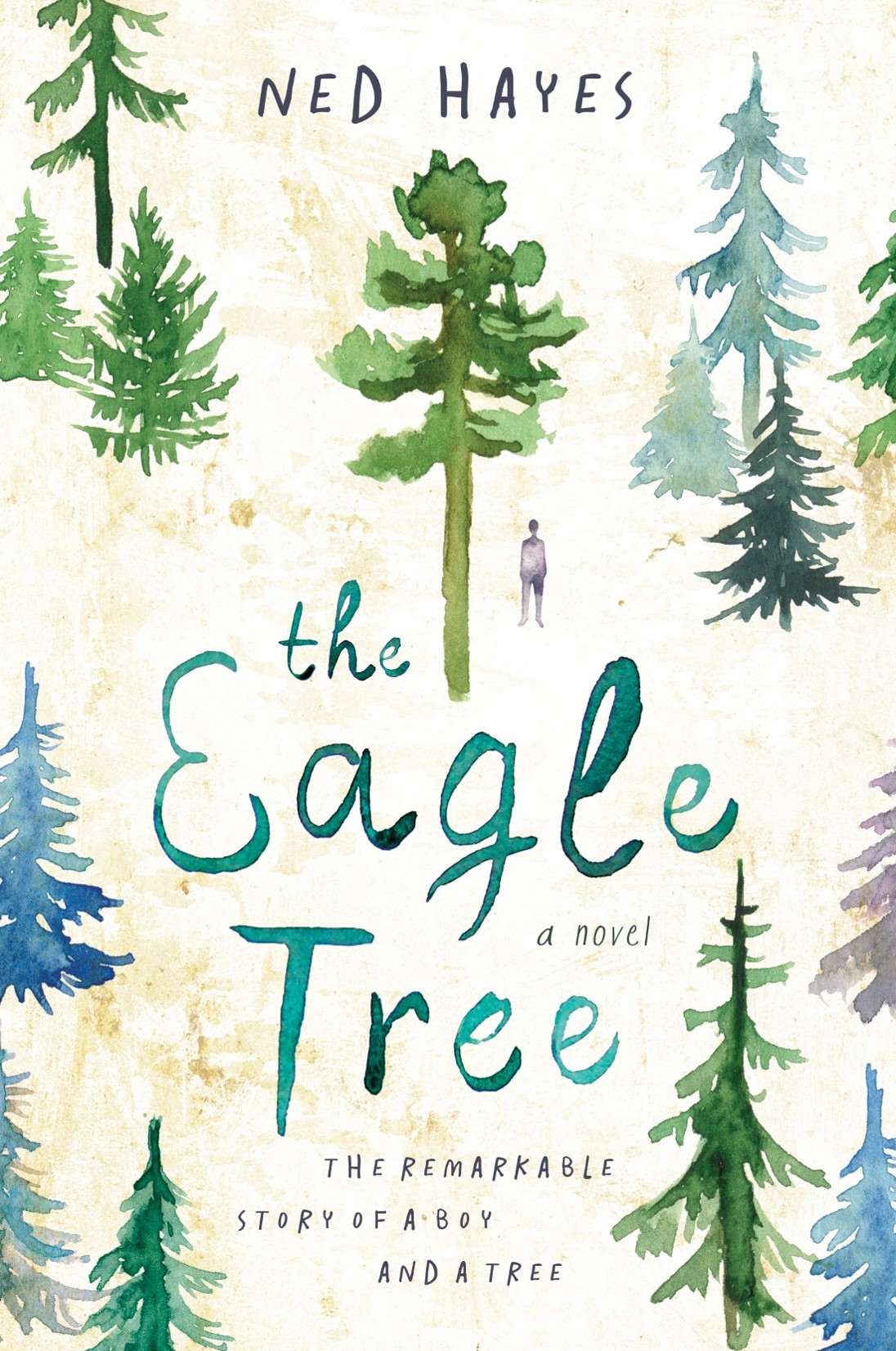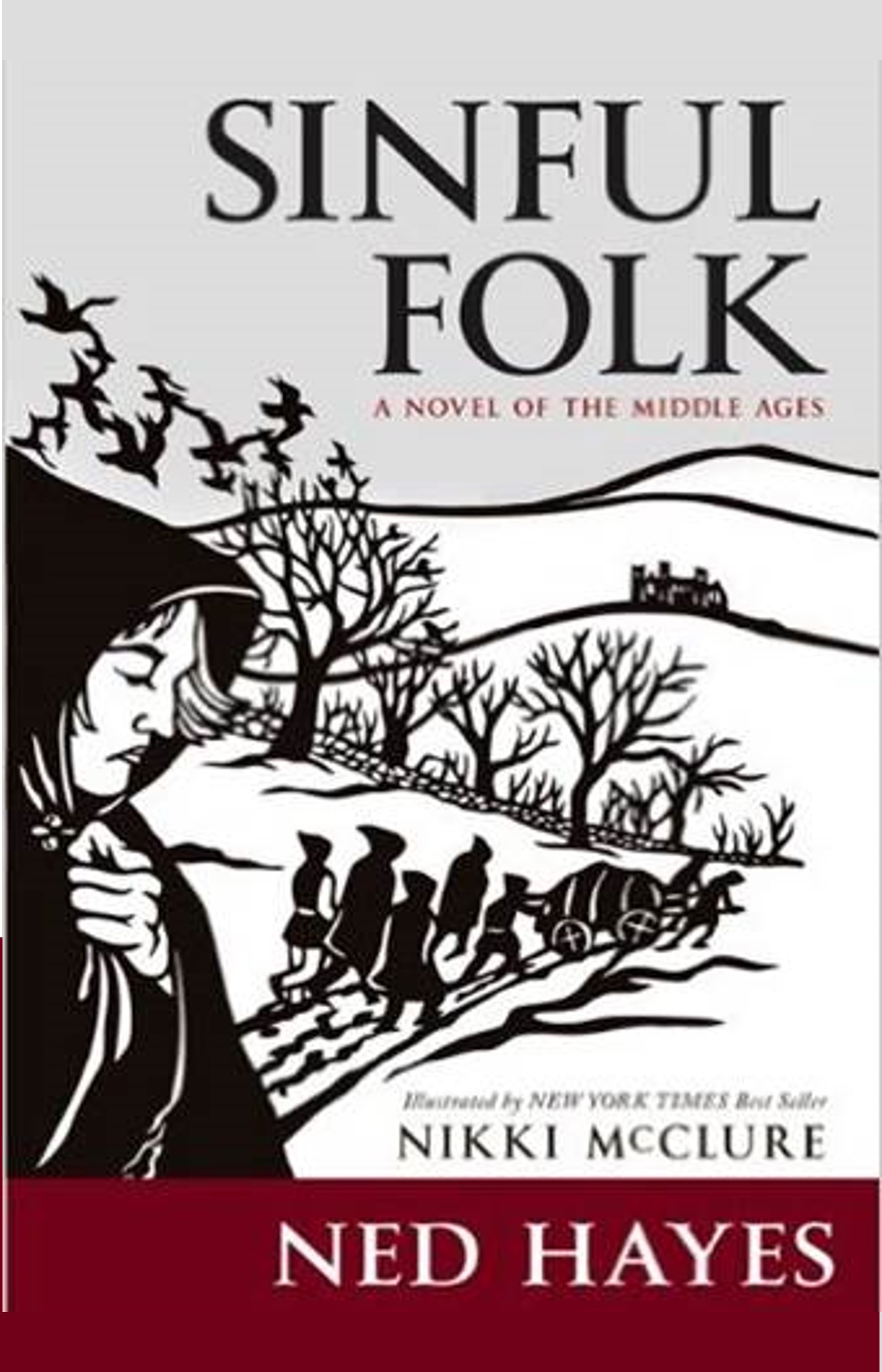Book Review: Sinful Folk by Ned Hayes
by M Denise C • • 4 Comments
by Ned Hayes
Campanile Books: New York
January 13, 2014
Kindle edition
Print length: 362 pages
–Sinful Folk by Ned Hayes with a
wonderful cover by Nikki McClure
Sinful Folk by Ned Hayes was a much better book than I had expected. I remember choosing this book to review because the novel was a work of historical fiction set in the Middle Ages. Once I started to read the book, I was quickly enrapt by the story and finished the novel in a few days. The story begins in the small village of Duns somewhere in a remote northern section of England in the late 1300s. Readers quickly learn that the protagonist of the story has just suffered the loss of a child due to a fire deliberately set. This child, named Christian, and some other pre-teen boys were trapped in a locked room in one of the leaders of the village home, and all burned to their death. What was really intriguing was that the father of Christian was not really a man, as the villagers believed, but was really a woman and was Christian’s mother. Ol’ Mear, known by the others as a deaf mute, was really Miriam, an ex-novitiate of an abbey, who fled her previous life after bearing a child out of wedlock.
When the book begins, the villagers are riled up and blaming each other and the Jews for the boys’ deaths. Jews had not been present in England at this time for many years, yet were blamed along with unknown witches. No one knows who would want to kill their boys and there were many unanswered questions. All that these villagers could agree on was that they needed to go to the closest monastery where more learned men lived, taking with them their boys’ bodies and present their mystery to the monks and try to get some resolution there. The monks were not receptive to the villagers (mainly because they were carting around dead bodies), and the villagers decided that they must now appeal to the court and king in London. The majority of the book was composed of this arduous journey to London and to solving the mystery of the boys’ murders. A group of the boys’ fathers (including Mear) and a orphan child that was not killed with the others began the journey.
Throughout the journey, the readers of Sinful Folk get the back story of Miriam and of many of the villagers, and the history of the village in general. The journey and stories evoked memories of reading The Canterbury Talesdecades ago, although I remember very little of those tales. After finishing the book, I read in the credits that author Ned Hayes based some of the stories in his novel on The Canterbury Tales by Chaucer. He also noted that he used quotes and citations from the writings of St. Augustine and St. Thomas Aquinas and some other texts from the Middle Ages. I thought all of these references and usages enhanced this novel to a great extent and was appreciative of Mr. Hayes extensive research. Many Old and Middle English words were used and seeing this words and the author’s use of the language also enhanced the book.
Mear/Miriam was an excellent character to narrate the story and we are slowly revealed all of the mysteries as she/he is revealed them. Many twists and turns are present, as is the realistic violence of the times. I thoroughly enjoyed this book and I recommend the tale, especially to readers of historical fiction.
–author Ned Hayes
My main criticism of the book regards the title. I dislike the title of the novel,Sinful Folk. No hint of a dual character or of a journey is in the title. This title just did not stand out to me in any way and as one of my friends noted when I told her the title: “Aren’t we all?” Many books I have read based on the title, but this would never have been one of those. But I did enjoy this book tremendously. I have no title to offer, but I think another might be more enticing if it related to the story more than this one.
One of the real characters of the time that Mr. Hayes weaves into his story isEdward, the Black Prince. Near the end of the story, the setting is in the Tower of London. Once again, I love how my reading life and my real life seem to converge, as I am set to revisit the Tower in a few weeks.
Some of the words I had to look up:
ululations–howls, shrill lamentations, wails
mayhap–perhaps, possibly
gorse–yellow-flowered shrub
bracken–a large fern
calefactory–a monastery room warmed and used as a sitting room
vole–a small rodent
destrier–warhorse; a charger used especially in medieval tournaments
wergild–the value set in Anglo-Saxon and Germanic law upon human life in accordance with rank and paid as compensation to the kindred or lord of a slain person
A short passage from the novel:
I sit with the rest by the warmth of the fire, but my thoughts are drawn to Cole, who was our hero and is now our outcast. I turn to look at him skulking under the cart.
The wheel of the cart behind that forlorn lad reminds me of the great wheel that Fortune turns. One day, a king rides out to battle, his forces following in splendid array. The next, that king lies in a ditch, cheek by jowl with the peasant folk.
The wheel of Fortune turns one way and another, taking us to the heights or to the depths. That is the great wheel on which we all turn, tied to destinies that move up or down at the whim of God above.







